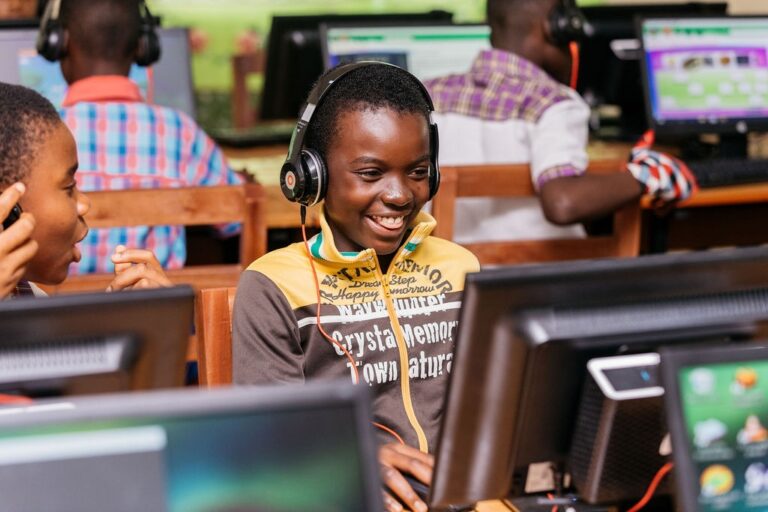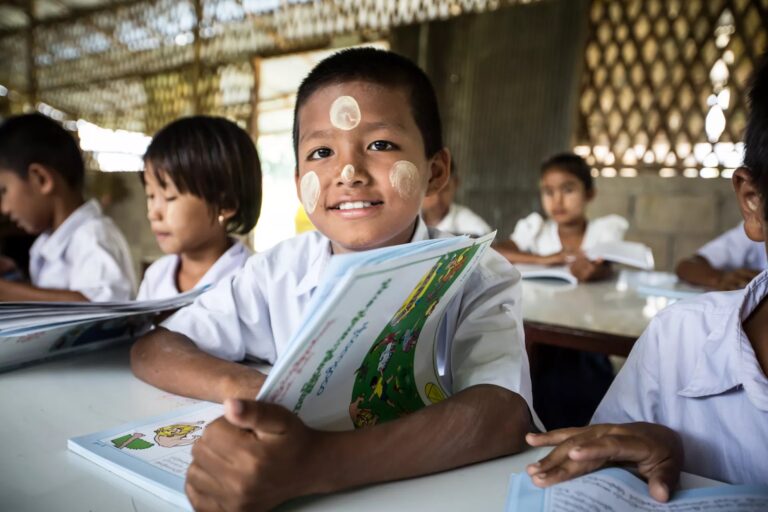09 January, 2018 by Trudy Bourgeois
The process to become an inclusive leader doesn’t start when a grown person enters into the business world. No, indeed it starts much earlier. It starts at the childhood stage and must be nurtured throughout the formative educational years. If we really want to accelerate equality in our society we all need to challenge ourselves to understand what biases we are passing on to our children. Children are not born with bias. They learn bias. The hard brain wiring contributes to the way any of us processes information, but it is the family that influences us the most as we develop, followed by our experience in the school system. Teachers at every level including the collegiate level must partner with parents to sow the seeds to produce citizens that believe in equality. This is not to let corporate America off the hook but rather to propose a collaborative effort between the individual, parents, teachers and business leaders.
If you follow corporate diversity and inclusion news, you’ll know that last year several CEOs from large corporations including Deloitte US, PwC, and Accenture took a pledge to support more inclusive workplaces. You can find the full pledge here CEO Pledge. Now, some universities colleges and even elementary schools are taking a cue from these corporations and signing pledges of their own At minimum they are starting the dialogue and engaging in the courageous conversations. And like their corporate colleagues, they are realizing the hard work has just begun.
In October of last year, the same group that launched the CEO pledge organized a Check Your Blind Spots Tour at several universities and colleges across the country. The tour’s goal was to help raise students’ awareness of unconscious biases and empower them to take part in diversity and inclusion conversations. The tour “bus” allowed students to participate in multi-media experiences focused on the issue of blind spots. Students watched videos, took tests, and were presented with educational content all in an effort to introduce them to the nuances of unconscious bias.
One of the stops on the Blind Spots Tour was Bentley University in Waltham, Massachusetts. Bentley University was the first university on the tour to sign the pledge. They had just hired Deborah Pine to be the Executive Director for its Center for Women and Business and I had the privilege of interviewing her. The Center for Women and Business helps corporations recruit, retain, and advance women in the workplace through action steps and thought leadership. When I spoke with Dr. Pine, we agreed that more universities need to step up and be bold. In fact, we spoke about the importance of starting the process at the grade school level. Grade school, middle school, colleges and universities need to build this culture within their organizations as a required skill if students are going to be prepared for the future.
You might be thinking what I’m sure many of the students on those college campuses were thinking during the Blind Spots Tour – that the millennials and Gen Zers wouldn’t need to be exposed to unconscious bias awareness education. After all, these generations have grown up aware of diversity issues much more than previous generations. However, as you know, we ALL have unconscious biases. The Blind Spots Tour simply set out to engage the students in a productive dialog around their own unconscious biases and inspire them to take what they learned into their daily lives. Millennials and Gen Zers care about social issues and are deeply concerned about the future. Research shows that 94% of Gen Zers believe companies should help address social and environmental issues. The diversity and inclusion issue is not new to these young people. College students have been talking about it. In fact, they are demanding change. According to UniversityBusiness.com, students from across the country have joined a nationwide movement demanding campus reform. As of 2015, students have presented lists of race-equality demands to 80 universities and colleges across the nation – TheDemands. This has resulted in a nationwide movement for campus reform regarding equality and inclusion. Another well-known movement called Concerned Student 1950 started on the University of Missouri campus to address race relations, workplace benefits, and leadership. This movement resulted in the resignations of the president of the University of Missouri System and the chancellor of the flagship Columbia campus.
Students are clearly organizing and activating. They are recognizing inequalities on college campuses and some universities are stepping up to address the issues. While universities like Bentley are leading the way in diversity and inclusion efforts, it’s going to take more than tour buses, petitions, and pledges to make real change. And greater involvement at the grade school level throughout the education cycle up into the collegiate level. Universities and colleges are going to have to commit to having courageous conversations within their halls and classrooms. They are going to have to infuse rigorous, researched curriculum into their interdisciplinary studies. It’s about time the education ecosystem (grade school to college) recognize that they must build cross cultural competencies in students who will represent the future workforce. The students who graduate from college today must leave school with the right set of skills for the job. This includes not only technical skills, but also the capacity to be inclusive, and to support and foster diverse perspectives and contributions.
Things are stirring at the grade school level as well. I recently had an opportunity to speak with a parent who is a champion for equality. Her children attend Greenhill, a private school in Dallas. “I chose this school because of the diversity”, said Toria Adams. To realize the fullness of the diversity, parents need to get involved. The entire ecosystem needs to be activated, she shared. Mrs. Adams went on to say, “We want to celebrate our diverse community while empowering our parents to talk to their kids about the social and racial issues that have been surfacing in today’s national dialogue. Many of our children are asking tough questions and we want to help prepare our parent community to have these important and courageous conversations with their children.”
We are living in a global society. Our world is shrinking. Students who are exposed to diversity and inclusion curriculum in the classroom will be able to explore social problems and improve their critical thinking skills. In addition, their college education experience must be enhanced, not just for underrepresented populations, but for the student body as a whole. Students need to be able to compete in the 21st century global economy.
Some schools, universities and colleges have begun to develop strategies for introducing diversity and inclusion curricula into classrooms. For example, Brooklyn College of City University of New York (CUNY) has developed a strategy for infusing curricula into interdisciplinary studies throughout campuses. In its strategic plan, Brooklyn College recognizes that the “foundation of an inclusive classroom is respect for all students and the commitment to develop the full academic potential of every student by supporting the individual capabilities of each one. To that end, the college must provide opportunities for the faculty to develop the skills to create an inclusive classroom.” Whether you are a university president or an elementary school teacher, you are critical to creating a diversity and inclusion breakthrough. Join forces, collaborate, share best practices, have the courageous conversations and touch the truth. You must begin now. The world is waiting.
Consider these baby steps to get you started in building a robust and meaningful plan:
1. Invest in building cultural competencies for the front-line staff (faculty, teachers, aids, therapist).
· Require every member of the faculty and staff to complete cultural competency trainingFree Implicit Bias Assessment.
2. Establish a committee to bring students and faculty together to discuss diversity and inclusion issues that arise in the classroom.
· Host 75-minute Courageous Conversation sessions to discuss what inclusive leadership.
· Host 75-minute discovery sessions to bring parents of the students and faculty together to discuss roles and responsibilities.
3. Ask all key stakeholders (faculty, administrators, department heads and teachers) to examine the curriculum to ensure that underrepresented racial groups and women are well represented and discussed.
· Bring in subject matter experts to offer an objective view.
4. Incentivize the front line (faculty and teachers) to create an inclusive classroom climate and develop diverse curricular initiatives that promote inclusiveness.
· Have faculty and teachers compete for grants to build inclusive collaboration and develop diverse curriculum.
5. Promote international partnerships for faculty and students.
· Ask foreign language faculty and teachers to schedule and manage exchange programs.
6. If you are a parent, ask your school to provide additional global competency training and certification credits for teachers.
7. Teachers, consider your space. A welcoming space for all students sets the tone for participatory learning and engagement.
· Consider placing diverse images around the room and on the walls. These images will have an effect on students’ understanding of classroom values.
8. Teachers, use gender-neutral practices.
· Not every student fits traditional gender categories. When seating or grouping students, use gender-neutral categories or allow students to choose the group with which they identify.
9. Teachers and faculty, remind students to be active listeners.
· Place posters around the classroom that spell out active listening rules like asking good questions and listening without judgment. Consider talking circles or practice activities that can strengthen active listening skills.
10. Teachers and faculty, work together with your students to establish a contract of norms.
· Classroom norms that list how classroom members treat each other can help build a socially and emotionally safe space for all students.
Resources:



![[Preliminary Report] CRNA Collaborative Research for Exploring Factors Nurturing"Happy and Resilient" Children among Asian Countries](https://equity-ed.net/wp-content/uploads/2024/09/1725672182698.jpg)


